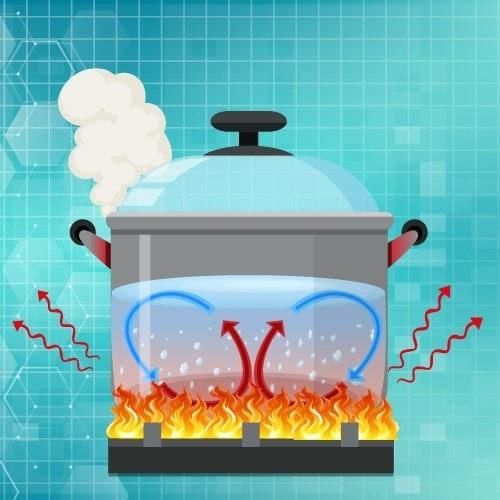Best Study Material for Mechanical Engineering Exam
Mechanical Engineering Exam > Mechanical Engineering Notes > Heat Transfer > Problems: Radiative Heat Transfer
Problems: Radiative Heat Transfer | Heat Transfer - Mechanical Engineering PDF Download
Questions for Practice (Module 7)
| Q.1 | What is the wavelength for thermal and infrared radiation? |
| Q.2 | Define black body and grey body emphasising on the differences and similarity. |
| Q.3 | If a stainless steel body reflects 45% of the incident solar radiation, what will be the absorptivity and transmissivity? |
| Q.4 | What is Wein's law? |
| Q.5 | What is the practical advantage of studying radiation shield? |
| Q.6 | What is the difference between spectral emissive power and spectral radiation intensity? |
| Q.7 | A hollow sphere having 1 m of diameter is evacuated and heated to a interior surface temperature of 600o K. If the sphere has a hole of 0.25 cm of diameter in the wall, how many watts of radiant energy is emitted from the hole. The inner surface of the sphere has an emissivity of (i) 0.9, and (ii) 0.4? |
| Q.8 | Find the view factor for the following geometry, all dimensions are in meter,
|
| Q.9 | A surface has a monochromatic emissivity of 0.2 for all the wavelengths less than or equal to 0.3micrometer and 0.85 for all the wabelengths greater than or equal to 3 micrometer. Find the total emissivity of the surface for a surface temperature of 1100o K. Determine also the solar absorptivity of the surface. |
The document Problems: Radiative Heat Transfer | Heat Transfer - Mechanical Engineering is a part of the Mechanical Engineering Course Heat Transfer.
All you need of Mechanical Engineering at this link: Mechanical Engineering
|
56 videos|78 docs|86 tests
|
FAQs on Problems: Radiative Heat Transfer - Heat Transfer - Mechanical Engineering
| 1. What is radiative heat transfer in chemical engineering? |  |
| 2. How does radiative heat transfer differ from conduction and convection? |  |
Ans. Radiative heat transfer differs from conduction and convection in terms of the mechanism of heat transfer. While conduction involves the transfer of heat through direct contact between solids or stationary fluids, and convection involves the transfer of heat through the movement of fluids, radiative heat transfer occurs through electromagnetic waves without the need for a medium.
| 3. What are the factors that affect radiative heat transfer? |  |
Ans. Several factors influence radiative heat transfer, including temperature, surface properties, and the presence of intervening media. Higher temperatures generally lead to increased radiation intensity. Surface properties, such as emissivity and reflectivity, determine the ability of a surface to emit and absorb radiation. The presence of gases or particulate matter between surfaces can affect the transmission and absorption of radiation.
| 4. How can radiative heat transfer be calculated or modeled in chemical engineering applications? |  |
Ans. Radiative heat transfer can be calculated using various mathematical models, such as the Stefan-Boltzmann law, which relates the radiative heat transfer rate to the fourth power of the absolute temperature and the emissivity of the surfaces involved. Additionally, radiative heat transfer can be modeled using computational fluid dynamics (CFD) simulations, which consider the geometry, surface properties, and temperature distribution to predict the radiative heat transfer within a system.
| 5. What are some practical applications of radiative heat transfer in chemical engineering? |  |
Ans. Radiative heat transfer has several practical applications in chemical engineering, including in combustion processes, heat exchangers, and solar energy systems. It is crucial for optimizing furnace design, determining heat transfer rates in reactors, and designing efficient solar collectors. Additionally, radiative heat transfer plays a significant role in materials processing, such as drying, sintering, and annealing, where controlling heat transfer through radiation is essential for achieving desired product characteristics.
Related Searches






























